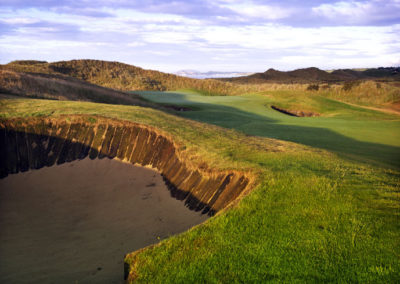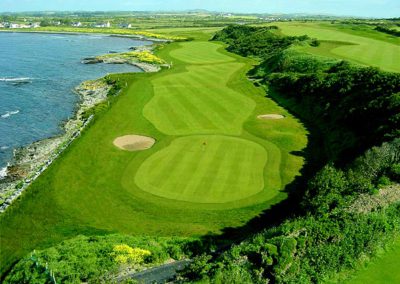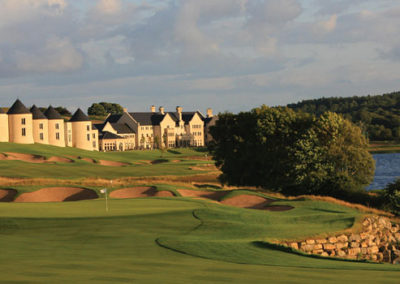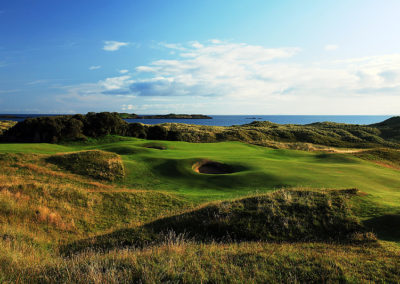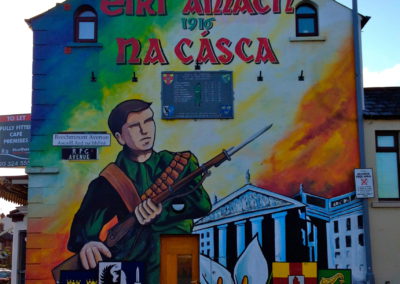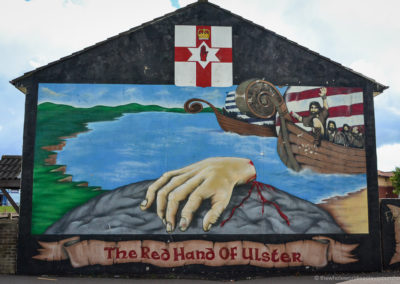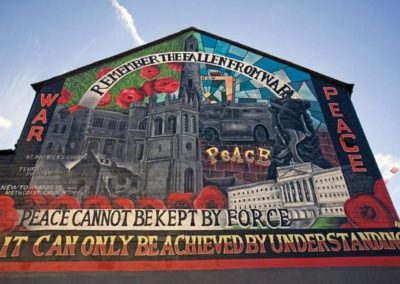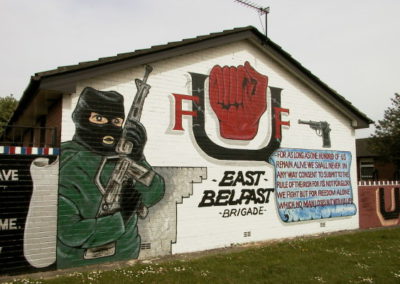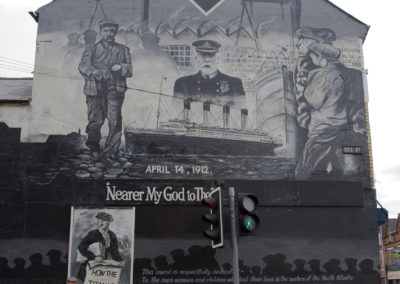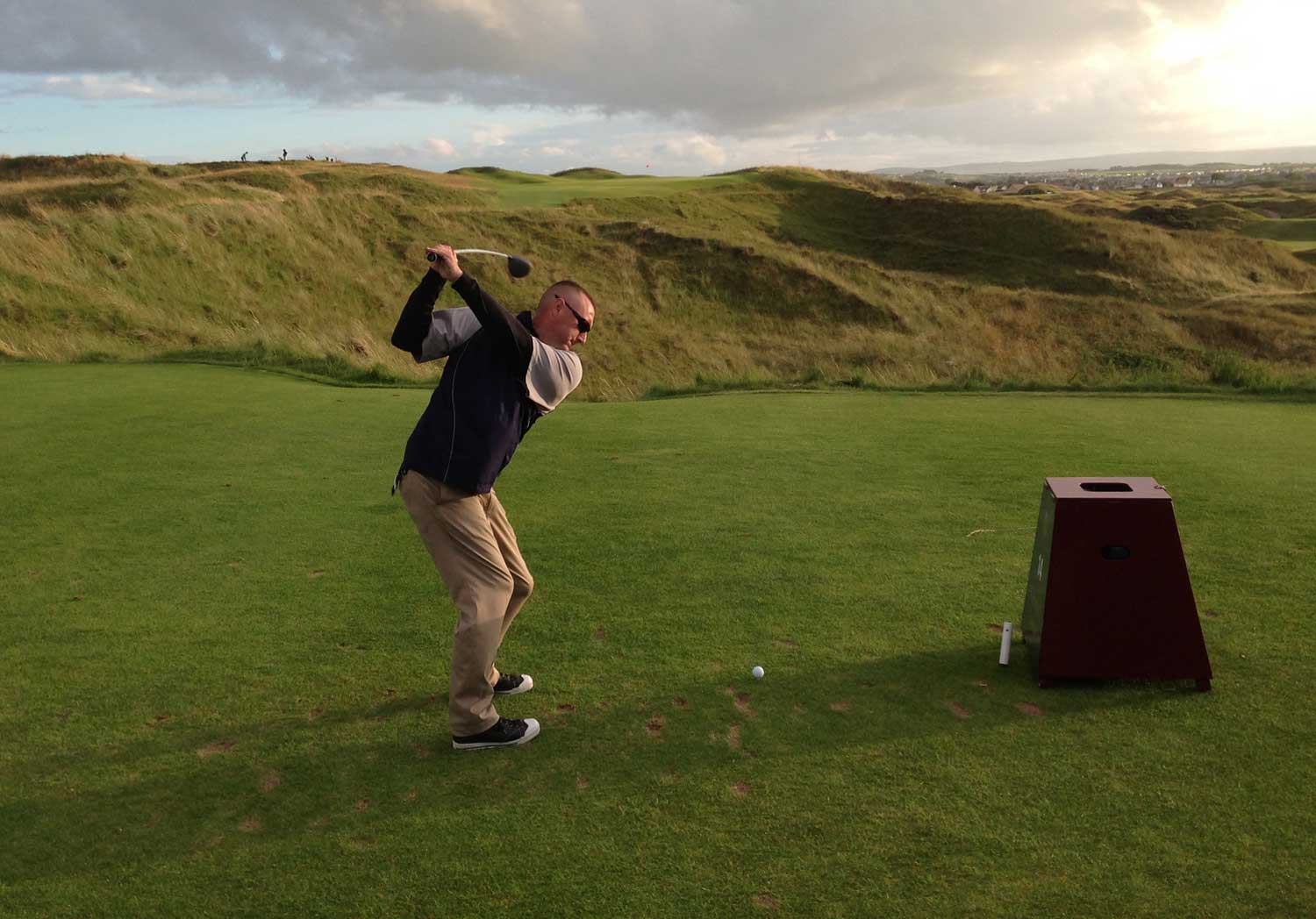
Golf Tours
RD Chauffeur Services will plan your entire visit, so you won’t have to worry about a thing. We will book your hotels, tee-off times and evening meals if required, so from the moment you arrive at the airport, whether it is Dublin, Belfast International or Belfast City, you can relax and enjoy the golf and craic.
Belfast Peace Wall and Mural Tours
Every city has it’s own unique style, unique shopping but Belfast city has a unique and dark past after emerging from 30 years of conflict.
Northern Ireland has become famous for the murals painted in almost every area of the country. They often depict the history and political views of both traditions and are a way of marking territory. These wall paintings often look intimidating but they have become as much of a tourist attraction as many of the regular attractions within Belfast and beyond.
Our Guides are knowledgable in all aspects of the Northern Ireland conflict and can give you an in-depth information about the murals as you tour them and the peace walls.
The tour includes the main Belfast Peace Wall separating the Loyalist Shankill Road and the Republic Falls Road areas. The wall has been signed by both the Dalai Lama and President Clinton.
Game of Thrones Tours
Full day guided bus tour from Belfast visiting filming locations from HBO’s Game of Thrones. We travel around Northern Ireland stopping at key locations sights of this epic drama viewed in over 199 countries around the world . With these tours you have your personal guide and transport to give you 5 star treatment as you visit Kings Landing, Stormlands and Winterfell just to name a few. Explore the ancient Cushendun Caves and discover well-known spots from the series such as the Carrick-a-Rede rope bridge and Dunluce Castle, as well as the UNESCO–listed Giant’s Causeway, which shares the same otherworldly feel as the filming spots.
Belfast Sightseeing Day Trips
Titanic Belfast
St Anne's Cathedral
Unlike the chief churches of other European cities, St Anne’s Cathedral (often just called Belfast Cathedral) doesn’t have a history stretching back far into the Renaissance or Middle Ages. It was begun in 1899 and, although basically finished in the 1980s, still lacks some finishing touches (like a steeple!)
Queen's University Belfast
Just as Dublin has Trinity, so Belfast has Queen’s. It’s the city’s top university and a center of green and calm. Neo-Gothic and neo-Tudor buildings mingle with less majestic fare. Over 20,000 students attend, so if you come in term-time there’s plenty of people-watching to be done as the campus goes about its business.
It was founded in 1849 and its main building was designed by Charles Lanyon. However, the main pleasure for the visitor is less its history and more just strolling around the grounds enjoying the tranquil enclave and the toney streets surrounding the campus.
Belfast Botanic Gardens & Palm House
Wet and cold? Spend an afternoon in Belfast Botanical Gardens and be transported to a friendlier climate. Established in 1828, the Gardens are probably most famous for their Palm House, which was built soon after. The Palm House, designed by Charles Lanyon, is of gracefully curved steel and glass with a birdcage dome and filled with seasonal displays and, in the ‘stove wing’, a mini-jungle.
The gardens also have a Tropical Ravine – a building with a bridge overlooking tropical varieties like banana, cinammon and orchids – an alpine garden, sculptures and rose beds.
Titanic Quarter
Belfast Castle
Belfast Castle sits high above the city on Cave Hill, looking the very picture of baronial splendor (it’s built in the Scottish Baronial style, like the Queen’s house Balmoral).
There’s been a castle on this site since the 12th century, but this one dates from the 1860s. It was built by the 3rd Marquis of Donegall. It went wildly over budget and, as the Marquis’ fortunes had changed, nearly didn’t get finished at all.
Today it’s a working castle, earning its keep with wedding receptions, conferences, an antique store and an adventure playground. At the visitors center you can find out all about the history of the Castle Hill site.
Noticed a cat motif around the place? It’s all down to a legend that says all will be well with the castle’s residents as long as there is a white cat in situ.
Crown Liquor Saloon
It’s like a museum – where you can drink stout. This 1826 fantasy beguiles the eye with every glance. Look up – there’s a pressed ceiling. There to your left? Brocaded walls and patterned tiles. To the right? Smoked glass screens and stained glass windows. Not to mention gunmetal plates (once used to strike matches) and antique bells (once used to summon your next drink).
Mosaics, carved wooden swans, mirrors, a red granite bar with a heated foot rest – it will spoil you for sodden beer mats and pokies for ever more. This temple to the art of conviviality was actually made by Italian crafstmen who were in Ireland to make Catholic churches. The owner of the Crown convinced them to do some work on the side for him. The result? Somewhere St Peter would be happy to take a tipple.
Stormont Estate and Parliament Buildings
Victoria Square Shopping Centre
Crumlin Road Jail/Gaol
Belfast City Hall
Titanic's Dock and Pump-House
This historical site is the first and last dock of the world famous Titanic. In April of 1912 the massive cruise-liner shored up to set sail from the Belfast port and never returned. Today, visitors can explore the shipyard where this behemoth of a boat came to life. The dry dock and pump-house are perfectly preserved and expert guides unlock a mystical world where engineers built an “unsinkable” ship and the well-to-do embarked on a journey from which they would not return.
Titanic Belfast
First Class Hotels
There are many first class hotels/B&B’s on the island. At RD Chauffeur Services we will manage all your hotel booking arrangements ensuring that you have nothing to worry about, and have a cracking night’s sleep before that all-important golf challenge.
Get in touch
Contact us now and book your luxury transport




